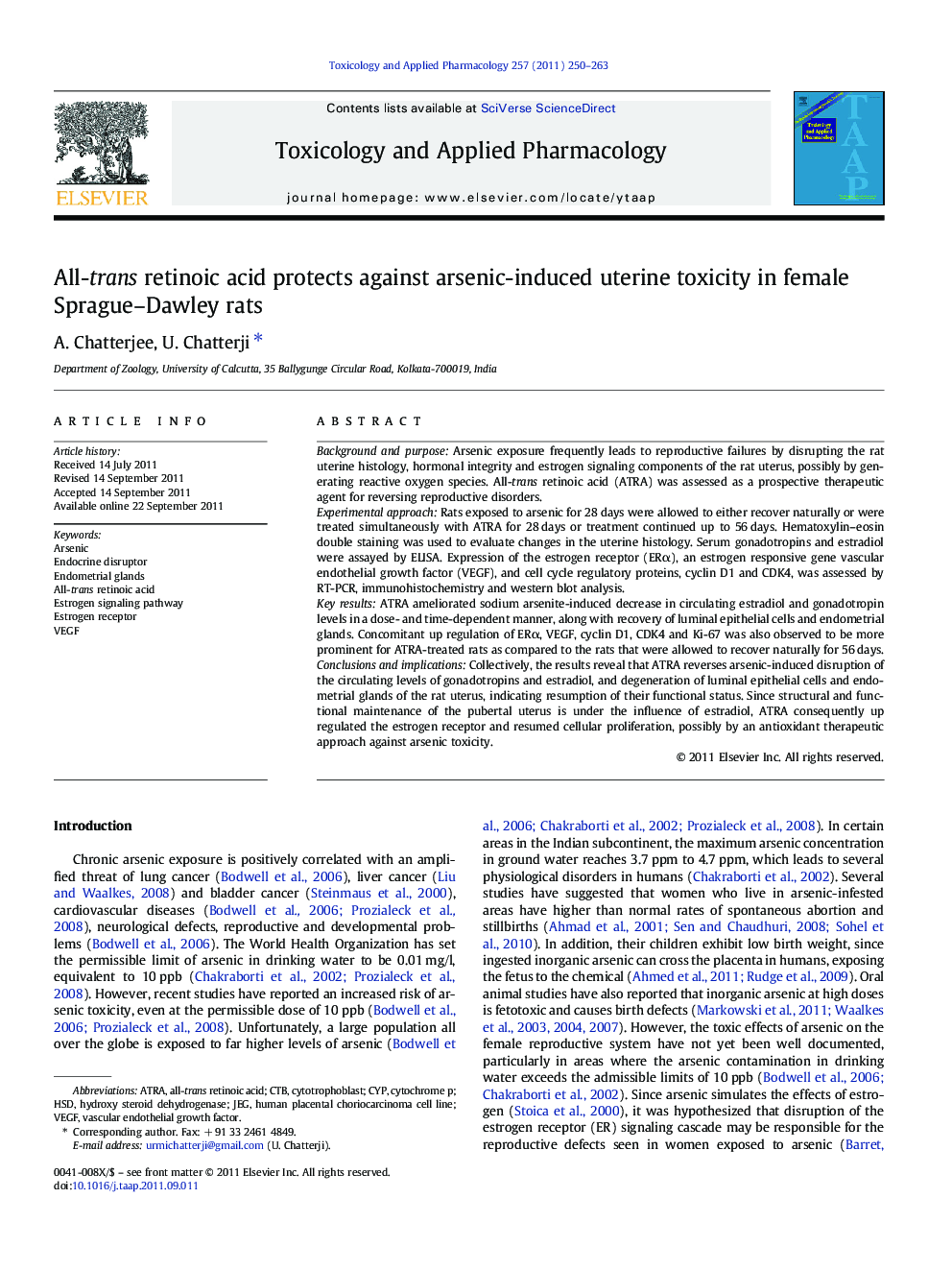| Article ID | Journal | Published Year | Pages | File Type |
|---|---|---|---|---|
| 2569752 | Toxicology and Applied Pharmacology | 2011 | 14 Pages |
Background and purposeArsenic exposure frequently leads to reproductive failures by disrupting the rat uterine histology, hormonal integrity and estrogen signaling components of the rat uterus, possibly by generating reactive oxygen species. All-trans retinoic acid (ATRA) was assessed as a prospective therapeutic agent for reversing reproductive disorders.Experimental approachRats exposed to arsenic for 28 days were allowed to either recover naturally or were treated simultaneously with ATRA for 28 days or treatment continued up to 56 days. Hematoxylin–eosin double staining was used to evaluate changes in the uterine histology. Serum gonadotropins and estradiol were assayed by ELISA. Expression of the estrogen receptor (ERα), an estrogen responsive gene vascular endothelial growth factor (VEGF), and cell cycle regulatory proteins, cyclin D1 and CDK4, was assessed by RT-PCR, immunohistochemistry and western blot analysis.Key resultsATRA ameliorated sodium arsenite-induced decrease in circulating estradiol and gonadotropin levels in a dose- and time-dependent manner, along with recovery of luminal epithelial cells and endometrial glands. Concomitant up regulation of ERα, VEGF, cyclin D1, CDK4 and Ki-67 was also observed to be more prominent for ATRA-treated rats as compared to the rats that were allowed to recover naturally for 56 days.Conclusions and implicationsCollectively, the results reveal that ATRA reverses arsenic-induced disruption of the circulating levels of gonadotropins and estradiol, and degeneration of luminal epithelial cells and endometrial glands of the rat uterus, indicating resumption of their functional status. Since structural and functional maintenance of the pubertal uterus is under the influence of estradiol, ATRA consequently up regulated the estrogen receptor and resumed cellular proliferation, possibly by an antioxidant therapeutic approach against arsenic toxicity.
Graphical abstractFigure optionsDownload full-size imageDownload high-quality image (105 K)Download as PowerPoint slideHighlights► Arsenic disrupts the uterine histology and estrogen signaling components in rats. ► Decrease in estradiol and gonadotropin levels, ERα, VEGF and cell cycle proteins. ► Arsenic disrupts the above components by inhibiting antioxidant defense mechanism. ► ATRA treatment led to recovery of uterine histology and ERα signaling components. ► Vitamin A in diet is a promising cure for arsenic-induced reproductive failures.
